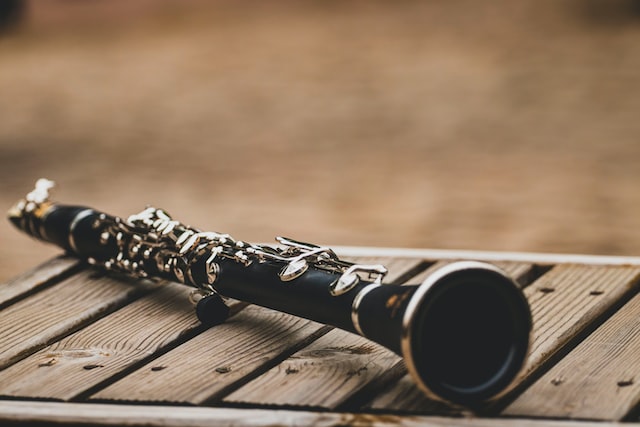Clarinet Vs Saxophone
Both the saxophone and the clarinet belong to the family of woodwind instruments which change their notes by covering tone holes, have a similar level of complexity, and are both used in the majority of mainstream musical bands. But in addition to that, they all have quite distinctive appearances, functions within groups, ranges, ages, designs and construction.
To create sound, the musical instruments that belong to the family of single-reed instruments each make use of a single piece of polished cane that is referred to as the “reed.”
The clarinet and the saxophone are the two wind instruments in this family that are played the most frequently and as a result, have stirred the curiosity in many to compare both. So, In this article, we’ll have a look at the similarities as well as differences between the saxophone and the clarinet
History
The development of the saxophone

Adolphe Sax, a Belgian instrument maker, is credited with inventing the saxophone in the early 1840s. His work with both brass and woodwind instruments earned Adolphe Sax a reputation for excellence. Adolphe Sax came up with the idea to design an instrument that had the body of a conical-bore brass instrument, the fingering system of a woodwind instrument, and a mouthpiece with a single reed. He called it the “saxophone”.
In 1846, French military bands played a key role in the development of the saxophone’s popularity. European composers were among the first to write music for the saxophone, both as a solo instrument and as part of chamber ensembles.
The development of the clarinet

The chalumeau served as the inspiration for the clarinet. The chalumeau was a type of pipe commonly used by peasants, and it only had one reed. There was no barrel or bell on the chalumeau, it was shorter than the modern clarinet, it had seven tone holes, the range was an octave and one note higher, and the instrument did not jump to a higher register when the player overblew it.
Johann Christian Denner, a musician and instrument manufacturer from Nuremberg, is credited with inventing the clarinet in the 1700s. In addition to being longer than the chalumeau, Denner’s clarinet had a bell, a bigger bore, eight tone holes, two keys, and a register key that enabled the instrument to overblow by a twelfth. Both the barrel and the mouthpiece were melded together into a single unit. With his son’s assistance, Denner persisted in perfecting the clarinet that he had been working on.
Clarinet Vs Saxophone – Sound
The clarinet sound
The sound that is produced by the clarinet can range from smooth and stealthy to harsh and powerful, depending on how it is played. The unique liquid and rich tone of the clarinet is a result of the form of the bore, which gives the instrument its distinctive appearance.
The player, the piece of music being played, the style of the clarinet being played, the reed being used, and the humidity all have a significant impact on the tone quality. Clarinets take up the same amount of space in wind bands as the strings do in orchestras and often play the same parts as well.
This makes them an especially important component of the instrumentation of wind bands. Therefore, unlike saxophones, the clarinet is an essential part of the orchestra and musical bands.
The saxophone Sound
Whether it is being played in a jazz ensemble or a concert band, the saxophone will provide a sound that is unique to that particular setting. In the context of a jazz band, the saxophone can produce a tone that is mellow, emotional, and full of vibrato, or it can produce a very rowdy tone.
The saxophone player in a concert band will most likely play with a warmer tone and make less use of vibrato than in a jazz band. When playing in a concert band situation, the saxophone has difficulties blending in with the rest of the group because its sound is so distinctive and projects further than the other instruments.
Clarinet Vs Saxophone – Size And Weight
To begin with, saxophones are often larger and heavier than clarinets because of the different kinds of materials they’re made from. Brass, which has a higher density, is used to make saxophones, whilst grenadilla wood is employed in the production of clarinets (which is much lighter).
These instruments each have mouthpieces that are appropriately sized for their bodies. Because of this, the mouthpiece of the instrument will be just as large as the instrument’s overall size.
When compared to clarinets, saxophones are often larger in size; hence, the mouthpieces of saxophones are also typically larger. On top of that, this results in the use of cane reeds. Reeds used in saxophones are typically larger in size although the material from which they are made is the same. This is done so that they can be used with the instrument’s larger mouthpieces.
Clarinet Vs Saxophone – Fundamentals
Embouchure
When compared to the embouchure of the saxophone, the clarinet’s embouchure is much more rigid and tight, while the saxophone is very relaxed. To create the embouchure for a saxophone, first, make the shape of an “O” with your mouth, and then pinch the inside corners of your mouth together.
When playing the clarinet, we want to make sure that our embouchure is very compressed. The embouchure that we use on the saxophone is lengthy and open. If the embouchure of the saxophone is made more compressed, the pitch will become sharp and thin. Because the reed is positioned at a horizontal angle within our mouths, tightening our embouchure will cause a pinching action between the reed and the mouthpiece.
Voicing
The voicing of the clarinet and the saxophone are completely dissimilar because to the differing angles at which the mouthpieces are positioned in the mouth of the player. The position of the throat on the clarinet shifts from one register to the next depending on how the instrument is being played.
When singing in the low register, the singer should open their throat as if they were going to utter “oh.” The “oh” form of the throat should transition into the “hee” shape as you begin playing higher notes on the instrument. To put it another way, the back of the tongue should be rising.
When playing the saxophone, it is important to keep the throat open. If you keep your throat open, all of the air that comes from your diaphragm will be able to enter the mouthpiece. When you start playing higher notes on the saxophone, make sure that your throat is still open.







